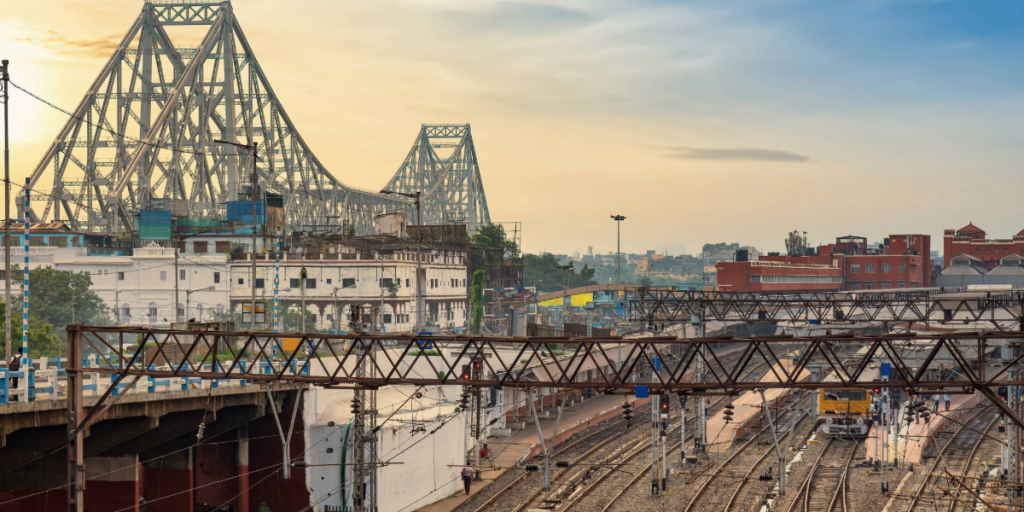How Did Howrah, Tasmania Get Its Name? Jun 18, 2024

At SBA we are always looking for connections between Australia and India. We hold great affecton for both these nations for obvious reasons – with our clients and teams based across both nations!
So we were intrigued when our CEO Partha Nag came across the town of Howrah in Tasmania during a business trip. Howrah was also an initial bastion of the British East India company when it was trying to establish a foothold in India on the banks of the river Hoogly in Calcutta.
So we have delved a bit deeper into the curious case of Howrah, to unravell the mystery behind the Tasmanian town with an Indian Name.
If you’ve ever found yourself traversing the scenic roads of southeastern Tasmania, chances are you’ve come across the town of Howrah. With its charming suburbs nestled along the western shores of the Derwent River, this region offers a delightful blend of natural beauty and rich history. But have you ever paused to ponder the intriguing origins of its name? Believe it or not, Howrah’s moniker traces its roots all the way back to a bustling city in eastern India, thousands of miles away. Let’s embark on a captivating journey to unravel the mystery behind this town’s unexpected nomenclature.
The Legend of the “Black Town”
Our tale begins in the late 18th century, when the British East India Company had firmly established its presence in the Indian subcontinent. Among the many strategic outposts under their control was the city of Howrah, situated on the western bank of the Hooghly River, just across from the iconic city of Calcutta (now Kolkata). Howrah, then known as “Haora,” derived its name from the Bengali term “Hau-ra,” which translates to “a place of trade and commerce.”
During this era, Howrah emerged as a thriving commercial hub, earning the moniker “The Black Town” due to the soot and grime that blanketed its buildings from the numerous factories and foundries operating within its boundaries. Despite its gritty appearance, Howrah played a pivotal role in the expansion of British colonial interests in India, serving as a vital trading post and industrial centre.

From the Banks of the Hooghly to the Shores of the Derwent
Fast forward to the early 19th century, when the British Empire had set its sights on the remote island of Van Diemen’s Land (now known as Tasmania). As settlers arrived on these distant shores, many brought with them memories and connections to their homelands, including the bustling city of Howrah.
One such settler was Edward Lord, a former sergeant in the British Army who had served in India and witnessed the importance of Howrah firsthand. When Lord was granted land in the Derwent Valley region of Van Diemen’s Land in 1808, he decided to pay homage to the vibrant Indian city by naming his new estate “Howrah.”
Over time, the Lord’s estate grew into a thriving settlement, attracting other settlers and forming the nucleus of what would eventually become the town we know today. The name “Howrah” stuck, a lasting tribute to the far-flung Indian city that had left an indelible mark on the minds of the early colonists.
A Tapestry of Cultures and Connections
The naming of Howrah, Tasmania, is a fascinating example of how the colonial era facilitated the intermingling of cultures and ideas across vast distances. As the British Empire expanded its reach, its subjects carried with them the memories and influences of the lands they had encountered, weaving them into the fabric of newly established settlements.
In the case of Howrah, a name that originated in the heart of Bengal found its way to the antipodean shores of Tasmania, a testament to the far-reaching impact of British colonialism and the enduring legacy of cultural exchange.
Today, the town of Howrah stands as a unique reminder of this global interconnectedness. While its namesake in India has undergone significant transformations over the centuries, the Tasmanian Howrah remains a vibrant community.
As we explore the streets of this charming town, we can’t help but marvel at the incredible journey its name has undertaken, spanning continents and oceans, bridging disparate worlds, and ultimately finding a home on the shores of the Derwent River.
In a world that often seems increasingly divided, the story of Howrah serves as a poignant reminder of the intricate tapestry of human experience, woven together by the threads of exploration, migration, and cultural exchange. It is a tale that invites us to embrace our shared histories and celebrate the rich tapestry of cultures that have shaped our world, reminding us that no matter how distant our origins may be, we are all connected by the enduring bonds of human curiosity and the desire to forge new beginnings.
References and Sources
- “Howrah, Tasmania” – Wikipedia entry: https://en.wikipedia.org/wiki/Howrah,_Tasmania
- “The Origins of Howrah’s Name” – Howrah City Council website: https://www.howrahcc.gov.au/history/origins-of-name
- “Howrah: A Tale of Two Cities” – Article by The Indian Express: https://indianexpress.com/article/cities/kolkata/howrah-a-tale-of-two-cities-5258249/
- “The Founding of Howrah, Tasmania” – Tasmanian Archives and Heritage Office: https://www.archives.tas.gov.au/howrah-history
- “Echoes of Empire: Tracing the Colonial Connections of Tasmanian Place Names” – Academic paper by the University of Tasmania: https://www.utas.edu.au/colonial-place-names
- “The British Raj: The History and Legacy of Great Britain’s Imperialism in India” – Book by William Dalrymple (2019)
- “Calcutta: Two Years in the City” – Book by Amit Chaudhuri (2013)
